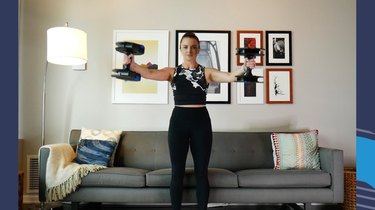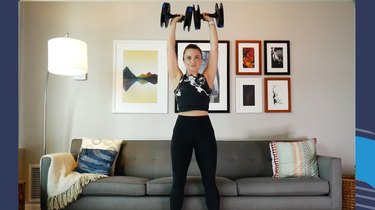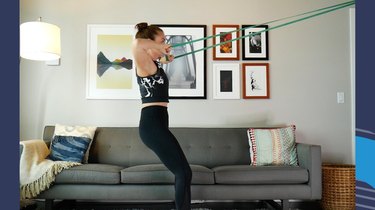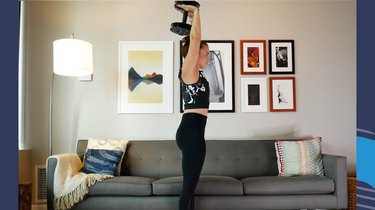
With constantly overflowing schedules and to-do lists, time is a precious commodity that you definitely don't want to waste — your workout time especially. You want to prioritize only doing the most effective exercises.
But some of the most popular shoulder exercises are actually a waste of time. Or worse, a few can even leave you injured. During your next upper-body workout, make sure you're skipping these four moves and swapping in with a better alternative.
Video of the Day
Video of the Day
1. Lateral Raises
Although lateral raises aren't necessarily a waste of time (they can still build shoulder strength), they increase the risk of the rotator cuff muscles getting compressed or impinged against the bones, says K. Aleisha Fetters, CSCS, author of Fitness Hacks for Over 50.
"This can lead to sudden pain or wear-and-tear injuries to the shoulder over time," she says. "That's most true when performed with a typical palms-down grip."
Instead: "If you have any history of shoulder issues or feel discomfort while performing lateral raises, I recommend doing scaptions instead," Fetters says.
Shoulder Scaption

- Start standing with a dumbbell in each hand, arms at your sides, palms facing in.
- Brace your core and lift the dumbbells in front of your body at about a 45-degree angle.
- Raise the weights until they're slightly above shoulder height.
- Lower the weights back down with control.
2. Behind-the-Neck Shoulder Press
"People sometimes do the press behind the neck because, at the bottom position, it puts more tension on the traps and delts," Fetters says. "But this exercise just isn't worth it to me, as it comes with a sizable risk of shoulder injury without having more payoff than other shoulder press variations."
In general, the difference between this press and a standard shoulder press is negligible. Plus, most people likely don't have the shoulder mobility to perform a behind-the-neck press properly without stressing the joints or putting pressure on the lower back, according to Fetters.
Instead: A standard shoulder press will get the job done without putting you at risk of pain or injury.
Shoulder Press

- Begin standing or seated with a flat back, feet rooted to the ground, holding a dumbbell in each hand.
- Lift the weights above your shoulders with your elbows bent at 90 degrees.
- On an exhale, brace your core and press both dumbbells overhead.
- Lower the weights back to the starting position with control.
3. Upright Row
Upright rows won't be a problem for everyone, but they requires a lot of mobility in the shoulders, according to Fetters. The position of the upright row can result in impingement, depending on your shoulder anatomy, making this exercise potentially painful and risky.
Instead: "I love face-pulls for hitting the rear delts and upper back," Fetters says. " With this move, though, grip matters and is the difference between face pulls being great for shoulders or bad for shoulders."
Resistance Band Face Pull

- Anchor a resistance band above eye level and grab hold of the band, standing a few feet away.
- Hold the band with the thumbs pointing toward your face.
- Pull the band to chin level, pulling the elbows behind the head.
- Return to the starting position with control.
Tip
Hold the band so that the ends are by your pinkies, as opposed to your thumbs, Fetters says. "Doing so externally rotates the shoulder to make sure you don't run the risk of the impingement issues you're trying to avoid in the first place."
4. Dips
Although this exercise is primarily for the triceps, Fetters sees people commonly program these as a shoulder exercise.
"The shoulders are secondary movers here, and they get put in just a really awful position during this exercise," she says. "I rarely see any reason good enough to include this in a workout — for me or my trainees."
Instead: "My favorite swap is an overhead triceps extension, which, again, is primarily a triceps exercise but also works the shoulders," Fetters says. "That's especially true in this exercise, because the upper arms are extended overhead, meaning that you activate the long head of your triceps to a greater degree than in other triceps exercises."
Overhead Triceps Extension

- Start standing holding one dumbbell, feet at hip-width distance.
- Grasping one end of the dumbbell in both hands, raise the weight straight above your head, arms fully extended.
- Lowering the weight toward the base of your neck, bend the elbows to a 90-degree angle.
- On an exhale, reverse the motion and press the weight straight up above the head.